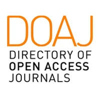Geometry of Wall Degradation: Measuring and Visualising Impact Craters in the Northern Walls of Pompeii 
Abstract
The paper presents the methodology used to digitally document the cavities preserved in the northern city wall of ancient Pompeii, to obtain a detailed documentation of the visible ballistic traces attributed to the impact of Roman artillery during the siege of Sulla in 89 BC, in the area from the Vesuvio to the Ercolano Gate. Building on previous studies by the team, authors intend to illustrate the workflow carried out to analyse the morphological characteristics of the existing traces by means of reality-based 3D digitsl models. These virtual replicas are intended to improve the knowledge of selected case studies due to their high relevance. In addition, some stone projectiles still preserved in the Antiquarium will be analysed. The final objective is to define a suitable approach for quantifying the terminal ballistics of Roman artillery based on conclusive evidence, thus allowing not only the virtual, but also the physical reconstruction of the launching weapons used in the war event.
Keywords
Full Text:
PDFDOI: http://dx.doi.org/10.2423/i22394303v14n1p111
References
Adembri, B., Alonso-Durá, A., Juan-Vidal, F., Bertacchi, G., Bertacchi, S., Cipriani, L., … Soriano-Estevalis, B. (2016). Modelli digitali 3D per documentare, conoscere ed analizzare l’architettura e la costruzione nel mondo antico: L’esempio della Sala Ottagonale delle Piccole Terme di Villa Adriana. Archeologia e Calcolatori, 27, 291–316. https://doi.org/10.19282/AC.27.2016.15
Adembri, Benedetta, Cipriani, L., Fantini, F., & Bertacchi, S. (2015). Reverse designing: An integrated method for interpreting ancient architecture. SCIRES-IT - SCIentific RESearch and Information Technology, 5(2), 15–32. http://dx.doi.org/10.2423/i22394303v5n2p15
Anniboletti, L. (2016). Le fasi delle fortificazioni di Pompei. Stato della conoscenza. SIRIS Studi e Ricerche della Scuola di Specializzazione in Beni Archeologici di Matera, 2015(15), 29–48. http://dx.doi.org/10.4475/782
Bertacchi, S., Al Jawarneh, I. M., Apollonio, F. I., Bertacchi, G., Cancilla, M., Foschini, L., … Montanari, R. (2018). SACHER Project: A Cloud Platform and Integrated Services for Cultural Heritage and for Restoration. Proceedings of the 4th EAI International Conference on Smart Objects and Technologies for Social Good, 283–288. New York, NY, USA: ACM. https://doi.org/10.1145/3284869.3284871
Della Corte, M. (1913). Il pomerium di Pompei. Rendiconti Della R. Accademia Dei Lincei, Classe Di Scienze Morali, Storiche e Archelologiche, XXII(6).
Di Marco, U., & Molari, P. G. (2020). Archimede ed il sistema di caricamento della balista da un talento utilizzata nella fortezza dell’Eurialo di Siracusa. In S. D’Agostino & F. R. d’Ambrosio Alfano (Eds.), Proceedings of the 4th International Conference | Atti dell’8° Convegno Nazionale, Naples, 2020, December 11th: Vol. I (pp. 393–408). Napoli: Cuzzolin.
Fabbri, M. (2016). Nuove ricerche per una rilettura delle mura di Pompei. Studi e Ricerche della Scuola di Specializzazione in Beni Archeologici di Matera, 2015(15), 49–70. http://dx.doi.org/10.4475/782
Fabbri, M. (2021). The City-wall in the Roman Age: The case study of Pompeii. Construction History, 36(2), 1–20.
Gonizzi Barsanti, S., Remondino, F., & Visintini, D. (2013). 3D surveying and modeling of archaeological sites—Some critical issues -. ISPRS Annals of the Photogrammetry, Remote Sensing and Spatial Information Sciences, II-5-W1, 145–150. https://doi.org/10.5194/isprsannals-II-5-W1-145-2013
Heron, A. (1572). Heronis mechanici Liber de machinis bellicis, necnon Liber de geodaesia. Venetiis: Franciscum Franciscium Senensem.
Iosephus, F. (1989). La guerra giudaica (G. Vitucci, Ed.). Milano: Mondadori.
Maiuri, A. (1930). Studi e ricerche sulla fortificazione di Pompei (Vol. 33). Milano: Hoepli.
Maiuri, A. (1943). Introduzione allo studio di Pompei (G. O. Onorato, Ed.). Napoli: G.U.F.
Maiuri, A. (1944). Pompei. Isolamento della cinta murale tra la Porta Vesuvio e la Porta Ercolano. Notizie degli scavi di antichità, 275–314.
Maiuri, A. (1960). Pompei. Sterro dei cumuli e isolamento della cinta murale. Contribuito all’urbanistica della città dissepolta. Bollettino d’Arte del Ministero della Pubblica Istruzione, I–II(gennaio-giugno), 166–179.
Molari, P. G., Maraldi, M., Angelini, G., Bignami, S., & Lionello, G. (2012). La ricostruzione della balista di Vitruvio. https://doi.org/10.6092/unibo/amsacta/3245
Ottati, A., Bertacchi, S., & Adembri, B. (2019). Integrated methods for documentation and analysis of archaeological heritage: The residential building along the western side of the Canopus at Hadrian’s Villa. Initial results and research perspectives. SCIRES-IT - SCIentific RESearch and Information Technology, 8(2), 85–106. https://doi.org/10.2423/i22394303v3n2p85
Pesando, F. (2015). Colonia Cornelia Veneria Pompeianorum, ovvero l’esperimento dell’oligarchia. Mélanges de l’École française de Rome - Antiquité, (127–2). https://doi.org/10.4000/mefra.3060
Pintus, R., Pal, K., Yang, Y., Weyrich, T., Gobbetti, E., & Rushmeier, H. (2016). A Survey of Geometric Analysis in Cultural Heritage. Computer Graphics Forum, 35(1), 4–31. https://doi.org/10.1111/cgf.12668
Piranesi, F., Piranesi, G. B., & Guattani, G. A. (1804). Antiquités de la Grande Grèce, aujourd’hui Royaume de Naples: Antiquités de Pompeïa (Version 1.0, Vol. 1). Paris, FR: Piranesi Leblanc.
Rossi, A. (2024). The Survey of the Ballistic Imprints for a Renewed Image of Unearthed Pompeii. Nexus Network Journal. https://doi.org/10.1007/s00004-023-00762-9
Rossi, A., & Palmieri, U. (2020). Le immagini negate/The denied images. In A. Arena, M. Arena, R. G. Brandolino, D. Colistra, G. Ginex, D. Mediati, … P. Raffa (Eds.), Connettere. Un disegno per annodare e tessere. Atti del 42° Convegno Internazionale dei Docenti delle Discipline della Rappresentazione/Connecting. Drawing for weaving relationships. Proceedings of the 42th International Conference of Representation Disciplines Teachers (pp. 803–828). Milano: FrancoAngeli srl. https://doi.org/10.3280/oa-548.47
Rossi, A., Palmieri, U., & Barsanti, S. G. (2022). Ripresentare il reperto di Hatra/Represent the find of Hatra. In C. Battini & E. Bistagnino (Eds.), Dialoghi. Visioni e visualità. Testimoniare Comunicare Sperimentare. Atti del 43° Convegno Internazionale dei Docenti delle Discipline della Rappresentazione/Dialogues. Visions and visuality. Witnessing Communicating Experimenting. Proceedings of the 43rd International Conference of Representation Disciplines Teachers (pp. 1033–1048). Milano: FrancoAngeli. https://doi.org/10.3280/oa-832-c70
Russo, F. (2004). L’artiglieria delle legioni romane. Le macchine da guerra che resero invincibile l’esercito romano. Roma: Istituto Poligrafico e Zecca dello Stato.
Russo, F. (2009). Sotto l’insegna dell’aquila: Storia dell’esercito romano dalla repubblica all’impero. Roma: Ufficio storico SME.
Russo, F., & Russo, F. (2005). 89 a.C. assedio a Pompei: La dinamica e le tecnologie belliche della conquista sillana di Pompei. Pompei: edizioni Flavius.
Russo, V. (2013). Intorno all’antico. Conservazione e fruizione delle mura di Pompei. In R. Picone (Ed.), Pompei accessibile. Per una fruizione ampliata del sito archeologico (pp. 105–117). Roma: «L’Erma» di Bretschneider.
Sogliano, A. (1917). Porte, torri e vie di Pompei nell’epoca sannitica. Atti Della R. Accademia Di Archeologia Lettere e Belle Arti Di Napoli, VI, 155–180.
Van Buren, A. W. (1925). Further Studies in Pompeian Archaeology. Memoirs of the American Academy in Rome, 5, 103–113. https://doi.org/10.2307/4238527
Van Buren, A. W. (1932). Further Pompeian Studies. Memoirs of the American Academy in Rome, 10, 7–54. https://doi.org/10.2307/4238562
Vitruvius, P. (1997). De architectura (P. Gros, Ed.). Torino: Einaudi.
Article Metrics
Metrics powered by PLOS ALM
Refbacks
- There are currently no refbacks.
Copyright (c) 2024 Silvia Bertacchi, Sara Gonizzi Barsanti, Adriana Rossi

This work is licensed under a Creative Commons Attribution-NonCommercial-NoDerivatives 4.0 International License.
SCIRES-IT, e-ISSN 2239-4303
Journal founded by Virginia Valzano





